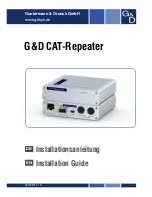
VII. WICK MAINTENANCE
VERY IMPORTANT !
VIII. CARBON REMOVAL/DRY BURNING
Carry out the "Carbon Removal" outdoors if windless, on a porch or the like, or in a room with
window(s) open because a strong odor is produced.
(a) With the fuel tank having only a small amount of kerosene, keep the wick burning without refilling
with kerosene even when the tank becomes empty. When the flame starts to burn out, raise wick
fully and leave it there untill it burns out. Wait approximately 60 minutes, then relight the wick
with a match if necessary, and allow it to burn out again. When it cools, remove any remaining ash
with an old toothbrush.
(b) The upper part of the wick will be cleared from carbon with this operation and softened; however, if
any parts are still stiff, pinch them by means of small pliers to fracture the carbon into pieces,
supply a small amount kerosene to tank and once more perform the "Carbon Removal." After the
carbon has been removed, refill tank and wait 60 minutes before igniting wick.
Carry out the "Carbon Removal" within 5 to 7 days after the first use of the kerosene heater. This will
reduce carbon accumulation to the wick. Thereafter perform the "Carbon Removal" every 5 or 6
tank fulls of kerosene.
If any water gets into the tank, or when the kerosene heater season comes to an end, completely remove
all kerosene from the fuel tank. VERY IMPORTANT!
NOTE: "CARBON REMOVAL" SHOULD BE DONE WEEKLY DURING THE HEATING SEASON
UNLESS NEEDED MORE FREQUENTLY. CHECK TO BE SURE.
The top of a fiberglass wick accumulates carbon in the process of burning kerosene. This must be
removed to maintain peak efficiency in burning. It is most important that you feel for carbon hardness after
the second or third tankful of fuel. A wick in good condition will feel soft while one that is carbonized will
feel like a bristle brush or, in late stages, the top could be coated with hard black carbon.
Check for resistance when turning the wick adjuster knob; check if flame height is correct; check if it
is difficult to ignite by the igniter. Any of these troubles result from carbon on the upper part of the wick.
To get rid of carbon, perform the "Carbon Removal" in the following procedure.
-
7
-



































